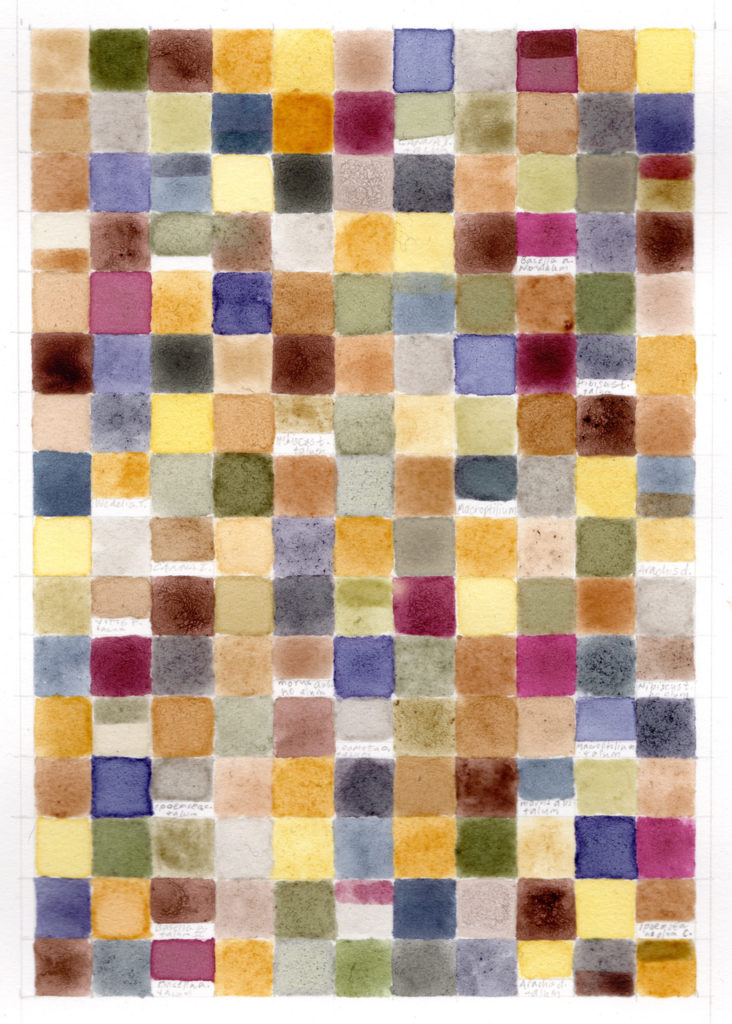
Last week on FEEDBACK FRIDAY, we welcomed socially engaged artist and educator Ellie Irons. Ellie talked about her Feral and Invasive Pigments project, a public fieldwork, writing, and studio-based project that revolves around making watercolor paint from the leaves, petals, and berries of the spontaneous plant beings (aka weeds) who thrive in areas heavily impacted by urbanization, industrialization, and climate change.
Watch the recording below.
About Ellie Irons:
Ellie Irons is an artist and educator living and working on Mohican land in current-day Troy, New York, USA. From foraged watercolor paintings to un-lawning experiments, her work combines socially engaged art, ecology fieldwork, and embodied learning. She is a co-founder of the Next Epoch Seed Library and the Environmental Performance Agency, collaborations investigating relationships between humans and spontaneous urban plants (aka weeds). Her solo and collaborative work has been part of recent exhibitions on contemporary environmental art, including The Department of Human and Natural Services at NURTUREArt, Ecological Consciousness: Artist as Instigator at Wave Hill, and Unsettled Nature at the Smithsonian Museum of Natural History. Her work has been covered by publications ranging from Art in America to the Proceedings of the National Academy of Sciences. Irons received a BA from Scripps College in Los Angeles and an MFA from Hunter College in New York. In December 2021, She completed a PhD in arts practice at Rensselaer Polytechnic Institute, focusing on artistic practice for cultivating plant-human solidarity and ecosocial justice in an age of extraction and climate chaos. She is currently an environmental educator at Radix Ecological Sustainability Center and lab manager at NATURE Lab at the Sanctuary for Independent Media, and an artist in residence at Basilica Hudson.
Project Statement:
Started in 2012, Feral and Invasive Pigments is a public fieldwork, writing, and studio-based project that revolves around making watercolor paint from the leaves, petals, and berries of the spontaneous plant beings (aka weeds) who thrive in areas heavily impacted by urbanization, industrialization, and climate change. From the brilliant blue of Asiatic dayflower, thriving on copper mine tailings in southeastern China and in monoculture crop fields in the Midwestern US, to the deep magenta of pokeweed, sprouting from deteriorating parking lots in Taipei and concrete riverbanks in Los Angeles, I work with local participants (humans and plants!) to build a living archive of the palettes offered by the vegetal beings who build our shared habitats. Through group harvesting sessions, paint-making, art-creation workshops, gardening experiments, and solo studio work and research, I co-create palettes that directly reflect the land that grew them, and use those palettes to inspire maps, charts, guides, videos and texts that explore plant-human relationships in the face of climate chaos. Making these palettes provides a hybrid, hands-on approach to contending with ecosystems impacted by extraction that is both flexible across habitats and intensely site-specific, while engagement with the vegetal beings who are learning to heal land damaged by extraction is both nourishing and sobering.
FEEDBACK FRIDAY
If you are not familiar with FEEDBACK FRIDAY, every week, we speak with dyers, artists, scientists and scholars about our favorite topic, natural dyeing and color. Curated by Amy DuFault, Botanical Colors’ Sustainability Director and presented by Botanical Colors’ Founder Kathy Hattori.
We even have our own theme song thanks to musician Jimmie Snider (click here to hear more of his music including a new song called Looking Out The Window)!
